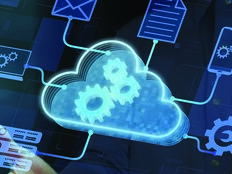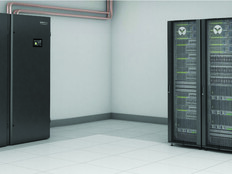Sustainability Through IT
Climate change is the inconvenient truth that is the crisis of our generation and several to follow. It is a present and ever-growing risk that threatens how society functions today and, perhaps, whether the planet survives tomorrow. Technology pervades society, which means that IT energy consumption and greenhouse gas emissions are by-products that exacerbate the problem. Most important, in the efforts under way to mitigate the problem, IT must provide solutions.
Technology plays a key role in helping enterprises increase energy and material efficiency and will be crucial in accomplishing that economically. In a low-carbon economy, in which energy costs are increasing, it will not be sufficient to do the same things in a more energy-efficient manner. Agencies need to rethink how things are done, re-evaluate and optimize components of the energy value chain, and view these efforts from an energy and greenhouse gas perspective.
Technology Now
But there is more than hope on the horizon. There are commercial green IT products and services available today, innovations being developed in research laboratories, and prospective long-term actions planned. Many current research efforts and planned actions focus on data centers, PCs and monitors, storage, software, printers and the IT infrastructure as a whole. Specifically:
• Data centers present immediate opportunities in the areas of design, power use, cooling and floor space. Next-generation data centers will likely be modular in design. Rather than building a large center sized for an estimated future workload (thereby using unproductive energy and emitting excessive carbon dioxide), smaller modular centers will be built that can meet growing demand in phases.
Further, data center design will focus on a thermal profile for hardware configuration to effectively pattern energy distribution and cooling. Thermal zone mapping and cooling through hot and cold aisles combining free air, air conditioning and liquid can save up to 40 percent of associated energy consumption in the data center. Collocation of servers in the data center will provide economies of scale and commensurate energy reduction.
• Server virtualization and application rationalization can substantially reduce the number of servers required and improve the environmental footprint. Running multiple applications on the same server increases efficiency and provides additional benefits, including reduced space requirements, less energy consumed and fewer servers produced by manufacturers. Fewer servers means less demand for recycling or waste management.
• Thin clients put most of the PC processing capability in a managed data center. This configuration not only improves manageability and security, but can reduce associated energy consumption by 25 percent or more with similar drops in carbon dioxide emissions. Other benefits include fewer points of failure, a longer lifecycle (averaging seven years, compared with three or four years for “fat” computers) and a significantly lower total cost of ownership.
• Cloud computing can significantly change the way service providers offer related infrastructure capability and provide software as a service through standardized, low-powered hardware, direct current power systems and optimized work flows in the data center. This has the potential to reduce the carbon footprint of IT operations, provide a new dimension to shared services and reduce the need for
numerous redundant data centers.
Behavioral change must complement technology efforts. Greening the consciousness of IT staff and everyone who depends on IT services — regardless of whether they see the energy bill — is critical.
Although this article primarily addresses the IT organization, others in CXO leadership positions must also take ownership of green strategies and actions. This hinges on developing a culture of measurement of a complete green lifecycle for assets serviced by IT.
IT should be accountable for the electricity it uses and the greenhouse gas emissions it produces. Consensus on comparable metrics and metering specific IT use is necessary. An effective dashboard that displays the carbon footprint in different ways can change behaviors in both the workplace and the home. With the transformation in communications that will likely occur during the next few years through the implementation of IP Version 6, this could happen more quickly than most people think. IPv6 will allow almost infinite Internet addressing for devices, making it possible to meter and control power consumption by specific locations.
Next Stop: Policies and Practices
So how does the government grapple with such a huge effort? The good news is that federal agencies (and many state and local governments, too) have already begun green work as part of their larger IT modernization and consolidation programs. The bad news is there is still a long way to go, and the difficulty the federal government has with significant change across major organizational boundaries is well documented.
The legislative and federal policy mandates already penned focus almost exclusively on end-user systems. Plus, there is a lack of standard practices, criteria and established priorities. Continued work in this area — by Energy, the Environmental Protection Agency and consortium organizations — will prevent agencies from duplicating efforts.
Although a tremendous effort and conflicting priorities lie ahead, what higher stake is there than the health of the planet? Agencies, industry and the public are clearly in this together. IT is a lead player in determining the environmental quality of life for all of us. And while there is much uncertainty, one thing is clear: Never has there been a stronger case for an effective public-private partnership than sustainability.







